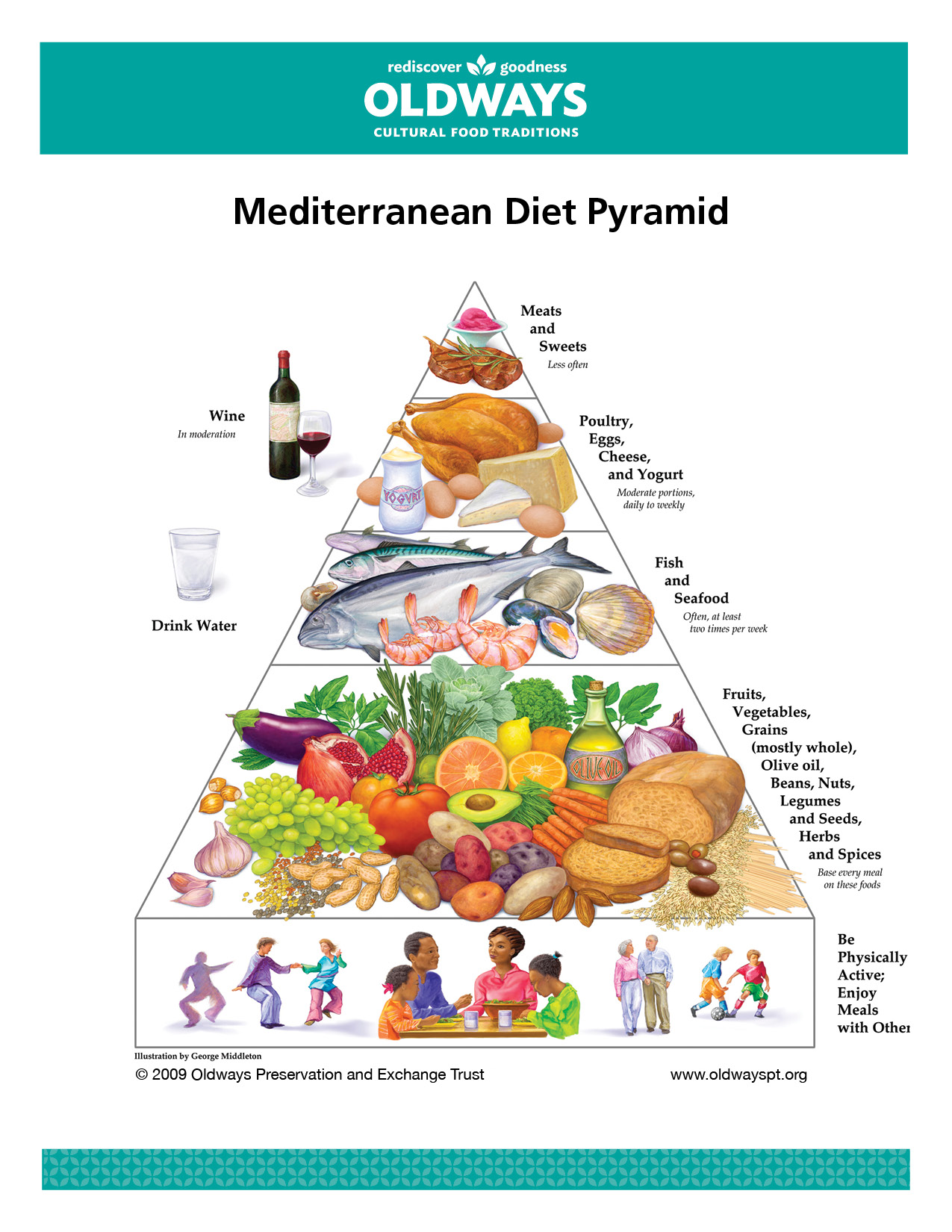2.1 Eating Patterns
The following eating patterns may reduce the risk of chronic diseases such as heart disease, Type 2 diabetes, and some types of cancer.
The US Department of Agriculture (USDA) 2020-2025 Dietary Guidelines for Americans or DGA, first produced in 1980, is published jointly by the USDA and the Department of Health and Human Services (HHS) every five years. It serves as a resource for federal nutrition programs, health professionals, and consumers on recommendations for foods and eating patterns that promote health and decrease the risk of chronic diseases.
MyPlate is a visual representation of the
following guidelines presented in the DGA:
|
|
|
|
|
|
|
|

The Mediterranean Diet
The Mediterranean Diet, named the US News Best Overall Diet for 2018, 2019, and 2020, is another eating pattern that is widely accepted as a guide for healthful eating. Oldways is a non-profit organization that is a resource for information, research, and educational materials on traditional diets.
The Mediterranean Diet refers to a healthful lifestyle and is not simply a list of the traditional foods of Mediterranean countries. It encompasses home cooking, eating minimally-processed meals, being physically active, and spending quality time, and sharing meals with family and friends.
Specifically, the Mediterranean Diet recommends:
|
|
|
|
|

Image 2.3 Mediterranean Diet Pyramid (Photo courtesy of Oldways Cultural Food Traditions)
The DASH Diet
Named the #2 US News Best Overall Diet in 2019 and 2020, the DASH Diet stands for Dietary Approaches to Stop Hypertension and is an eating pattern used to prevent or treat high blood pressure.
The DASH Diet:
|
|
|
More information on the DASH Eating Plan can be found online at the National Heart, Lung, and Blood Institute.
The Planetary Health Diet
The Planetary Health Diet was introduced as healthful to both humans and the global environment in the peer-reviewed and independent 2019 report “Food in the Anthropocene: The EAT-Lancet Commission on Healthy Diets from Sustainable Food Systems.” This diet is not without controversy; the WHO (World Health Organization) withdrew support for the eating pattern in April 2019 after the science backing the report was questioned.
The report states that food production practices specifically add to poor global nutrition and “calls for a substantial global shift towards healthful dietary patterns, large reductions in food loss and waste and major improvements in food production and practice.” (Today’s Dietitian, June 2019 The Planetary Health Diet, KC Wright, p. 25)
The diet is not specifically promoting vegetarian or vegan diets, but it is recommending individuals make half their plate fruits, vegetables, and nuts and the other half of the plate plant proteins, whole grains, and unsaturated fats. The diet does acknowledge some small amounts of meat, starchy vegetables, and added sugars.
The Vegetarian Eating Plan
The USDA DGA supports a vegetarian eating plan as healthy and recommends including more beans, peas, soy, nuts, seeds, and whole grains for individuals eliminating meat, poultry, and seafood. Vegetarians often have healthier body weights, lower cholesterol levels, lower blood pressure, and lower cancer incidences, possibly because of the higher intakes of whole plant foods. Also, vegetarian diets may be used to treat or prevent type 2 diabetes and heart disease.
There are different types of vegetarian diets, but most do not include any meat, poultry, or seafood.
Some Types of Vegetarian Diets Include:
|
|
|
|
|
Nutrients that Vegetarian Diets May Need to Focus on:
|
||
|
|
|
|
|
|
FOOTNOTES

